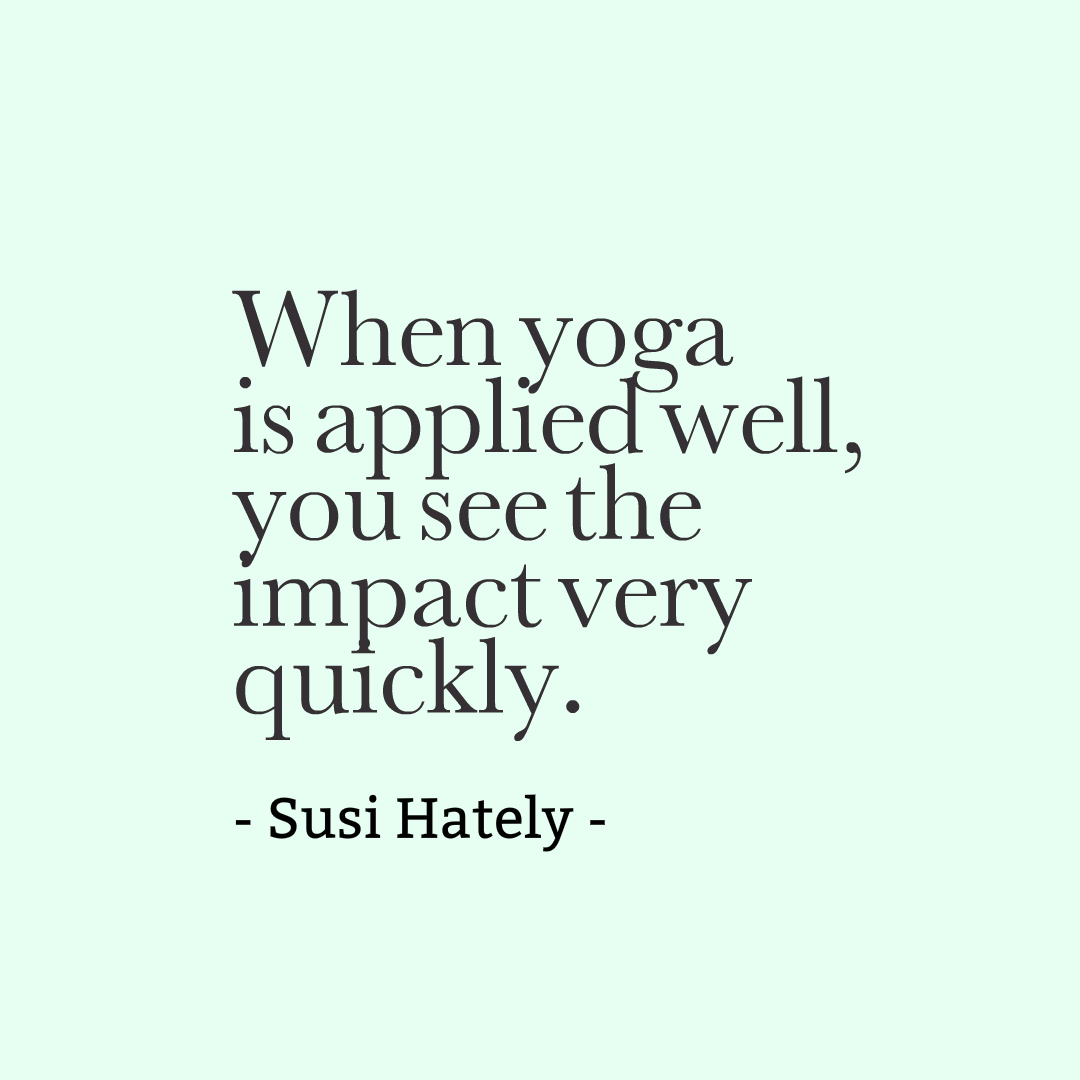By Susi Hately, BSc. Kinesiology, C-IAYT
Cindy was a participant in my Therapeutic Yoga Intensive in October 2017. She sent me a question about her client and below is our dialogue. I am sharing it with you here because it really highlights the “how” of really meeting the person who has the condition and how vital that is to helping someone heal.
Cindy’s Question: I have a client in his late 50’s who has had back pain since he was 16 years old, the doctors couldn’t explain his pain and he has been on pain meds for years. He started meditating 20 years ago and that helped him deal with his pain and also prevented him from having a fusion surgery. He also has peripheral neuropathy that is getting increasingly worse. I had him focus on breath (he tends to breath shallow and jerky) and also had him do extremely small mobility movements – stopping when he had an increase in pain or numbness (he tends to really push through hard- so we were talking about him not pushing through and listening for when the pain signals increase. My thoughts were to help him calm the nervous system as much as possible with breath and then gentle movements to free things up). As a follow up, he said he slept better than he had in quite some time and had some relief. What more can I do?
Here is our dialogue. Cindy agreed to share it because we both feel there is some really good insight available. Specifically that we often hear that it is not about the condition, that we need to start with the student, and then time and time again, the programming becomes all about the condition. I hope it provides insight.
Susi’s Response: Well done!! You are helping your client, he is becoming aware of the correlating factors that are contributing to his pain. Here are some additional thoughts:
- We know that the experience of pain is a biological scenario that resides in the nervous system. If he feels safe, his experience of pain is going to go down, and if he feels threatened then his experience of pain will increase.
- From an infrastructure standpoint, he needs to be able to reduce his compensation so that his tissue can absorb the load. His tendency to “drive” through enables compensation and will tire him out much faster. A key is that as he feels better (which he is), that he doesn’t dive into more activity or longer walks etc. He feels better, in part, because he has become better integrated and he now needs stamina to maintain it and grow it. If he doesn’t grow that stamina, he will be back and forth between feeling good and not feeling good.
Cindy: This makes total sense and is in line with what I know about chronic or persistent pain. I was quoting you saying the turtle always wins.
Susi: So…what is the question, really? What is the question under the question?
Cindy: I think I was wanting a protocol that would help him. Yet I know there isn’t really one.
Susi: You do realize you have a protocol. That Presence builds Awareness, and grows our power of observation which helps us with Assessment. Assessment leads to Clarity of what is working and what isn’t working. You see the pattern and you can refine or change the pattern. This will change the nervous system and the interaction between the nervous system and the rest of the body.
Cindy: I totally get it. I think I forgot because this is a “serious medical issue”.
Susi: The condition is the condition. Knowing about the conditions is important, and, how someone expresses the condition is just as important if not more important. No two people express a condition in the same way, which means no one protocol will help all people with “xyz” condition. You have to have a huge heart and be an “open” observer. It is all about the person who has the condition, how they move, how they breathe, how they are able to come to rest, or not.
Cindy: Yes, I totally get it. He loved the restorative sound healing he came to on the weekend. He was able to get so relaxed and was able to rest.
Susi: And that information gives you more understanding of what he needs.
Cindy: Got it!!
In summary – pay attention to what is happening. Allow yourself to be with the person who is in front of you.
Enjoy,
Susi
PS. The next two Therapeutic Yoga Intensives are scheduled for April and September 2018. Here is the link to check out details and to register
